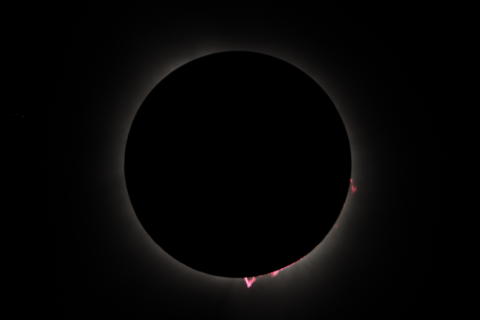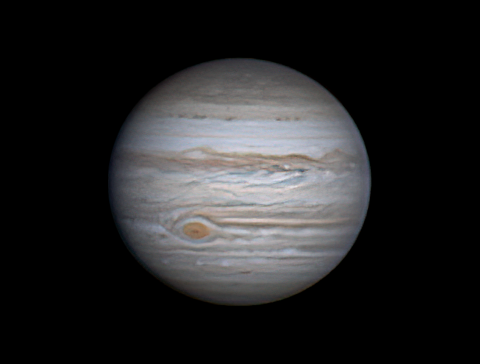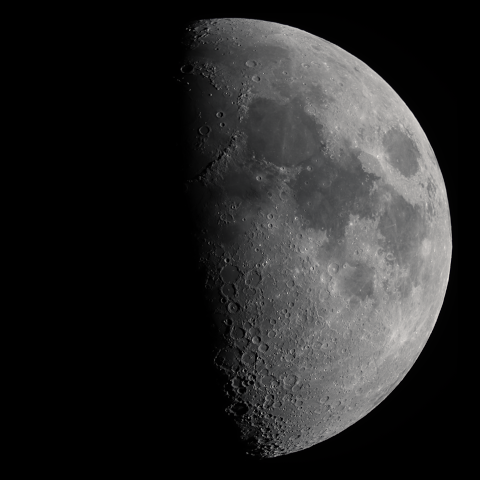Our producer, Jim Craig, also dabbles in astrophotography.
Clicking on the thumbnail images will open the full sized images in a new tab.
|
M 81 (Bode's Galaxy)
|
|
 |
This is M 81 or Bode's Galaxy, a galaxy visible in the constellation Ursa Major.
It's a composite image taken using two telescopes, Jim's Celestron C8 XLT and the Charlotte Amateur Astronomers Club's PlaneWave telescope.
|
|
M 1 (The Crab Nebula)
|
|
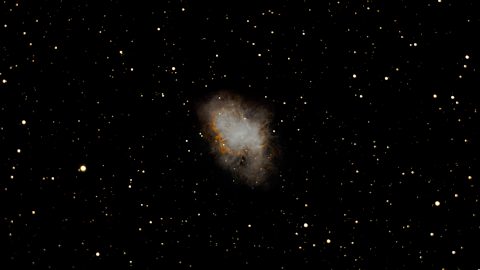 |
This is M 1 or the Crab Nebula, the remnant of a star that exploded in the constellation Taurus.
In 1054 AD, Chinese astronomers wrote of a "guest star" in the sky that was so bright it cast shadows.
This is what's left of that star.
|
|
M 1 (The Crab Nebula) - Revisited
|
|
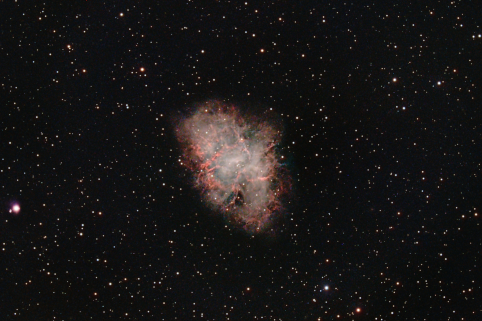 |
This is the same data that was used to make the previous image of the Crab Nebula but processed using new techniques.
It was processed using PixInsight with the BlurXTerminator plugin.
|
|
M 27 (The Dumbbell Nebula)
|
|
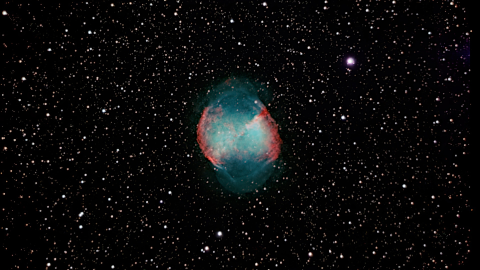 |
This is M 27 or the Dumbbell Nebula. It's also called the Apple Core Nebula.
The image is combined data from two nights of astrophotography.
It's the remains of a sun-like star after it has left the main sequence to die as a white dwarf.
|
|
M 42 (The Great Orion Nebula)
|
|
 |
This is M 42 or the Great Orion Nebula, a region of star birth found in the constellation Orion.
This was taken using the Charlotte Amateur Astronomers Club's 10" Meade imaging scope.
|
|
M 42 (The Great Orion Nebula) - Revisited
|
|
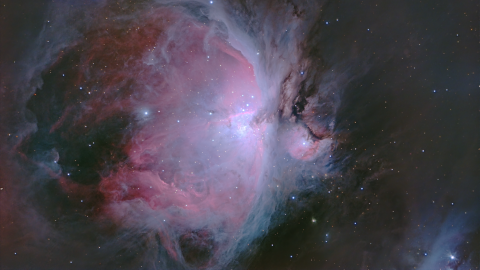 |
Once again, this is from the same dataset used for the previous image but has been processed using
PixInsight.
By using Weighted Batch Pre-Processing, I was able to remove the satellite streaks visible in the original
version. I was also able to use Generalized Hyperbolic Stretch to bring out details in faint areas without
blowing out details in bright areas.
|
|
NGC 891 (The Silver Sliver Galaxy)
|
|
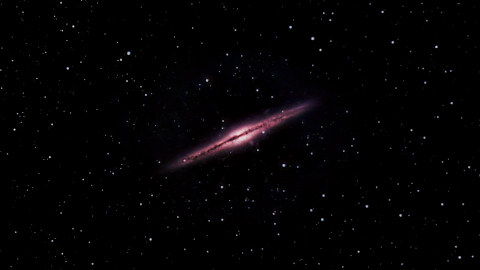 |
This is NGC 891 or the Silver Sliver Galaxy found in the constellation Andromeda.
This was Jim's first image of an edge on spiral galaxy.
|
|
M 13 (The Hercules Cluster)
|
|
 |
This is M 13, a globular cluster of more than 100,000 stars found in the constellation Hercules.
It was discovered by Sir Edmund Halley in 1714.
|
|
M 13 (The Hercules Cluster) - Revisited
|
|
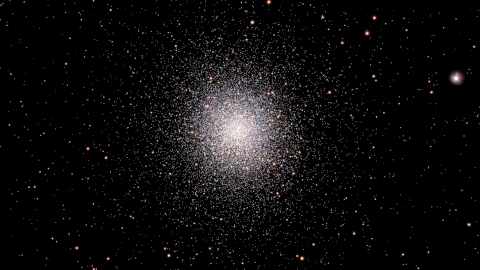 |
Another reprocessing of a previous image.
This image uses the same dataset as the one above.
|
|
IC 5146 (The Cocoon Nebula)
|
|
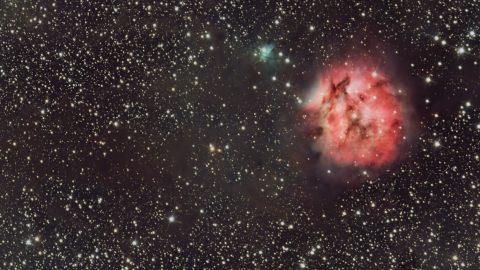 |
This is IC 5146 or the Cocoon Nebula found in the constellation Cygnus.
This was a collaboration between Jim and his friend Rick Johnson using the Charlotte Amateur Astronomers Club's PlaneWave telescope.
|
|
NGC 7635 (The Bubble Nebula)
|
|
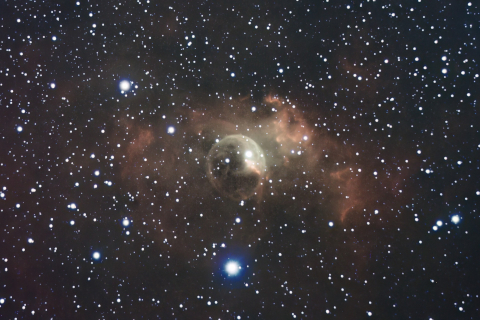 |
This is NGC 7635 or the Bubble Nebula in the constellation Cassiopeia.
The hot star SAO 20575 is blowing away the gas cloud forming the bubble-like structure found in the cloud.
|
|
M 51 (The Whirlpool Galaxy)
|
|
 |
This is M 51 or the Whirlpool Galaxy in the constellation Canes Venatici just below the handle of the Big Dipper. It sits at a distance of 23.5 million light years.
This amazing face-on spiral galaxy is interacting with its smaller companion galaxy which is distorting the shape of its larger companion.
A keen eye can see other, more distant galaxies including IC 4277 (to the right of the smaller galaxy of the pair) which is a distance of 547 million light years.
This is the first image taken entirely at Planet of Mystery's fully completed Apollo Observatory.
|
|
M 51 (The Whirlpool Galaxy) - Revisited
|
|
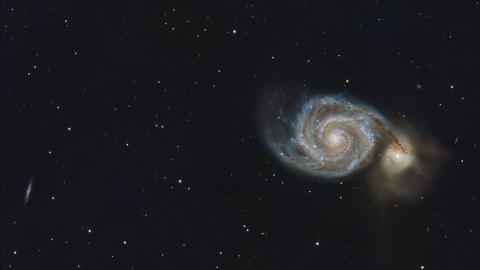 |
Like the Crab Nebula above, this is the same data as the previous M51 image but with new processing.
It was processed using the commercial package PixInsight with the addition of the BlurXTerminator plugin.
|
|
NGC 7380 (The Wizard Nebula)
|
|
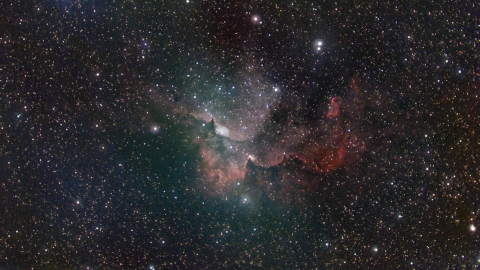 |
This is an open cluster of stars surrounded by nebulosity that resembles a wizard.
This was shot from the Apollo Observatory.
|
|
M 16 (The Eagle Nebula)
|
|
 |
Similar to the Wizard Nebula above, the Eagle Nebula is an open cluster of young stars (1 to 2 million years old).
Another image from Planet of Mystery's Apollo Observatory.
|
|
M 16 (The Eagle Nebula) - Revisited
|
|
 |
This view was shot the night following the session for the Eagle Nebula shown above. This time, there was no focal reducer.
Using a technique called drizzling during weighted batch pre-processing (WBPP), more detail could be brought out from the data.
|
